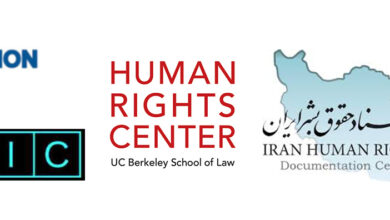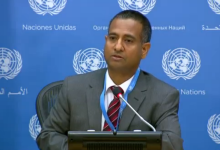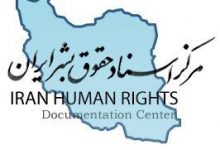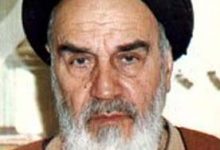Aadel Collection
Iran – A Power in Search of Identity (Arab Press Source – July 3, 1978)
Domestic Opponents Patronised; Muscles Flexed Abroad )
woye p gQ , in a quiet and little noticed announcement, the Shah effectively
turned his back on Islam as the basis of his regime. The announcement, replacing
the urn He r Ca !‘ th one based on the classical Persian Imperial
E Tlendar M yrus the Great, i àFie ofI èr fès of S te P s I which the ShãFfl ias
tried to find a new basis for modern Iran.
The Shah is a ruler in search of a new political and social identity that should
suit his grand designs for his nation - in short a new ideology for a potential super-
power.
yfly Dropping the Islamic Base . There are many reasons why the Shah should not
regard Islam as a basis for such an ideology. He contrasts the splendorand igour
of the Achaemenid and Sassanid Emperors with the apathetic and submissive state
of Persia in Muslim times.
In particular, he. considers the Shia religious order of modern Iran — mainly the
AyatullahS of Qom -. to exert a baleful influence on their congregations, and argues
that the Shia order has become a barrier betwe fl the Ruler and his people.
That the Shah's current suppression of the AyatullahS should affect Iran's position
in the Middle East or its relations with the neighbouring Muslim states is a problem
already tackled by the Shah's numerous emissaries and well understood by Mr Sadat
of Egypt, the Baathist rulers of Iraq (I E.. June 19), the rulers of Saudi Arabia
(I . E. June 26), and the Kings of Morocco and Jordan. To them all, the Shah' s
clamp down is a simple case of dealing with “Isla niC M xists” — or Black meflaCe ' ,
as the Shah occasionally prefers to call his religious foes, or “some ma a s ”
The Shah and President Sadat are in agreement on comparing this blocking role
of the AyatullahS with that of the old guard Nasserite “power centres” in Egypt
whom Mr. Sadat accuses of standing as a barrier between him and the people.
A ‘Unifying' Force . The Shah seeks especial inspiration from the careerof Cyrus
Th Great who began as the Prince of a small Persian state and ended as the ruler
of an Empire in which external conquests were mirrored by internal regimentation.
This regimentation did not necessarily prevent individuals proViflg their qualities;
but it did prevent fragmentation of political power. The Shah believes that Islam,
and in particular the ig uaen .E2C e, while
fragmenting power between different communities under the influence of different
AyatullahS (see below).
Three weeks ago, when the Shah said “I will not allow this country to be partitioned
again”, he was alluding to this fragmentation of power and to the fact that Ayatullah
influence means that the Shah's writ does not automatically run in all parts of Iran.
The Shah believes that if the Ayaiullahs were to succeed in reviving the 1906
1tution, which laid down that the Shah reigns but does not rule and requiring
a committee of five Ayatullahs to mike sure parliamentary legislation adheres to
the precepts of Islam, then Iran would split into several parts, each controlled
by different groups of the Shia order.
Like Cyrus the Great, the Shah sees himself the unifying force of a great Empire.
His son, cjQwLLEEifl .e WftQ .I3 nQw.c ll -cY.C - ' is already being imbued
with martial thinking to groom him for a career no less significant in the Shah's
mind than that of his illustrious namesake Prince Reza is to be trained in the
United States as an pi19 Subsequently, he will be trained as a Navy
commander —
Charting •a New Course with a New'Elite' The Shah's grand design for Iran to
become the world's 5th or 6th super-power envisages the emergence of a new elite,
comprising several groups not just Shia Muslims. He is thus promoting
Mnc im. who have broken with the Avatullahs.
TBP000280
IN SEA I CH OF IDENTITY
A POWER
• lendart w T1r y iPP1 tion, that the bel1J erefltAYatU1hIhs0fQ0m
coJ ht the full drift of the Shah's thinking. More Rahais were brought to -
power and, irfdeed, Ere ni .er iov id w s on A u ust .15 .replaced .by.aie1thw
Ba Jarnshid QUZeg çL while he became Minister of Court; in June
alone over 2 ,. Parsi families arrived to settle and thus exercise their “right
of return” from several centuries of self-exile i India. -
The Ayat llahs have been carefully studying, the Shah's moves since he cele—
- bratedin - - he supposed 2,500th anniversary of the ancient Achaemenid
Empire wo ears later, the Shah's previously symbolic revival of the
Zoroastrian faith took more concrete shape with the arrival of Indian Parsis
to run newly established Zoroastrian temples. Some 12 0Oo tfl nLh v
migrated from India to Iran where they can now worship
in those temiilI — a dT act as a catalyst for a Zoroastrian revivaL
These migrants, seen as the forerunners of a general Parsi return to Persia,
are divided ir4wo main groups) The riçj bourgeois merchants of Bombay,
arriving with their fortunes intact, are being offered high positions in industry
and finance, while the poorer migrants form a new agricultural cadre on land
which the Ayatullahs c& ider to be Muslim property. The Shah ‘is believed
anclQUZ Jo secvr tben tU 1 QLUP oiQO.OQQP -ar5iS (a name which means
“Persians”) over the next decade.
The Bahais Somewhat like the Parsis, the Bahai community in Iran consi-
ders itself as “ the Shah's chosen p poleL” . It is a relatively. mQfl IlamLc_
community, found d at the turn of the century with a base still operating in
Tel A iJi . numbering about QQ,QQQP OPle in Iran . About 4 Q,,0QO Bahais
live in various parts of the world, mainly in the United States, South America
and Europe and in Israel.
In Iran, the Bahais form an elite of politicians, civil administrators, army
commanders, as well as intellectuals, financiers, merchants and industrialists.
They are the creme of high society; but they seldom associate themselves
with any opposition gmup and are rarely involved in anything that the Shah
might consider “dishonourable.”
(The believed to be the most liberal group in the Middle East, were
once listed by O jç O It was
after President Sadat .'s intensive lobbying in 1975 that the Boycott Office
was prevented from putting them on the Arab blacklist).
The Jews . The Jewish community in Iran is prosperous, numerous and, indeed,
jimost as powerful as the Bahais. But like the Bahais, Jewish figures seldom
reveal or abuse their powers, which are concentrated on trade, finance and
industry.
The Jewish community is said to 1rflt La!2Q!!.L 22 2 000 — a major part of which
having also acquired Israeli ci erst Ip . .and practically living in both coun-
tries. They have esta'b 'iished a booming channel of trade with Israel. Their
intellectuals are very inib j .ILuverS.Lt1eS and in the mass media, and
form the backbone of Iran's growing class of scientists.
Other minorities, such as Armenians, Chaldeans and other small Christian
groups are, likewise, favoured by the Shah and enjoy his protection.
With the help dl these and loyal Shia groups — all forming his elite - the Shah
is charting a course for Iran in which the Ayatullahs become totally irrelevant.
Socially, this elite should spread numerically and geographically to all parts
of Iran to rouse the people from their “Islamic lethargy” tO a new way of life
based on equal rights for women, Economicall j, the eISrLQU1 .,W'!i.!:tle
,Lrania into aconsLiflierSOciety, introducing them into ie modern luxuiies
th l provoke thep _t9 work harder in order to spend more - Pohuicali3, ho é-
éiTThe scheme is far more complex than many had thought.
The • oi bonan7a 01 197i/74 came at the z i it time, about 10 years alter me
Shah had declared his “White Revolution”, to finance his planned super-state. -
Over $20. billion of annual oil revenues went almost exclusively to the sectors
of economy, defence and social development. By 1975k GDP rose to $ 56 .SbnL
for a population of about 34 5 million, Total armed firces [ ncreased to aboii
3003000 (now estimated to total over14 ,OO0, plus reserves put at 3 0,0O0)
By 1977 78, defence expenditure jfljg cabout
$7. 9bn -. ,y (V
The 1973/74 oil events had strengthened the Shah's resolve that the course
he was charting for “Greater Iran” was irreversible, and that “the Shia knot”
around his people, which he had been trying to untie since 1963, had to be
cut. Regional and international circumstances were not conducive to a shock
treatment, however. He was advised to restructure his political system before
cutting the religious cord around the people — to use the phrase of one former
adviser to the Shah.
In 192. , the Shah made his major political move. He created Rastakhiz . as a
ruling party grouping all existing legal parties, to channel the energies and
ambitions of his people into a single direction under his control (see following
page).
Apathy & Cynicism . What he found was that the people lacked energy, had
only limited ambition and wanted cheaper food ‘ — more than politics. He did not
find the vigour and drive he considered responsible for ancient Persian
glories. People were either apathetic to politics, or cynical. In most cases
cynicism towardsthe government had the mechanics of a religious discontent.
En some cases, particularly among the younger intelligentsia, cynicism was
the fruit of Communist indoctrination. Kurds and Arabs stuck to ethnic ideals,
Instead of blaming all this on lack of freedoms, poor diet and economic mis
management as well as Islam, the Shah ascribed it almost solely to submissive'-
ness inculcated by the Islamic Sharia or by Marxist ideolpgy,.
Rastakhi7 was meant to permeate all sections of Iranian society, initially to
act as a sounding board for the popular will, to relay popular thoughts, desires
and discontents to the government, and potentially to become a truly mass party.
Instead it became an empty bureaucratic machine, devoid of ideas and command
ing little or no public enthusiasm , The Shah blamed this failure mainly on
his “la7y” commissars, l- e did concede, however, but only in private discu-
ssions with his advisers ,(that the fault might just happen to lie with the Shah
himself, thinking in highl ”cultured and complex historical terms which were
way above the simple politico .religious philosophy of the Iranian peasant.)
When his new government, under Dr Amouzegar, told them to talk freely
expecting “constructive criticism” or hopes of a glorious future - all the Shah
got was simple answers: “Down with the Shah”, as their Ayatullahs had told
them lOsay,, or “Give us more bread”. More intelligent men simply kept their
mouth shut. To most planners in Rastakhiz, popular silence implied consent.
But the Shah knew the eloquence behind that silence: full submissiion to God,
the Allah who is Greater than all men and who, alone, should settle accounts
with the Shah. But this is only one part of the truth. A big section of the silent
majority backs the Shah' S “liberation of the human intellect”, his reforms
granting equal rights to women, and the distribution of vast (and mostly idle)
mosque lands among his landless subjects.
The Shia Order _ Powers The order of j .c1ez gymer well organised
ince the early days of the Islamic renaissance in Persia, has been tfl l
I lie 01 uei % ei LL4L Llk tt , % liii fl Ui hULl
lan p appreciative baza3rpropei'ty. 1 that IReza ShahinJLw.iQ'up lle
to observe the Constitution that was laid down a ar earlier. The Ayatullahs
i e the main authors of that constitution, upholding Islam as the religion of
the state. The law was based on the precepts of Islam — the Sharia and bot
the legislative and executive arms of the state were to act accordingly. There
was one particular clause requiring a committee of five Ayatullahs to supervise
the works of the legislature and the government and to see to it that legislation
fully adhered to the Sharia precepts.
The Shia order was thus proclaimed thecustodian of the faithful as well as
the censor of the regime; and the King should reign and not rule 4 ,
That clause was never observed, Reza Shah lost the throne. His son, Mohammed,
was brought to succeed him and to reign with “the help and guidance” of the
Shia order. Mohammed, too, did not observe that clause. When, in 1950, it
became clear to his Prime Minister, Mossadegh, that he wanted to rule, to
introduce a centralised democracy under his control and with the backing of
the Western powers, irrespective of the constitution, e Ayatullahs declared (
is-w l1 as his Western iippOrters. The Shia order backed I I
Mossadeah's “NationaI Froiit” and joined the Prime Minister in leading an.
Iamic nationalist movemenLsupported by Moscow. The Shah was deposed
In 1951 Mos d gh nationalised the British-led oil industry. But in the ensuing
super—power struggle for influence, culminating in Moscow supporting Mossa—
degh's efforts to break a Western oil blockade around Iran, the Shia order was
split. The faction of Ayatullahs that feared Soviet, he,, “atheistic”, domina-
tion of Iran and a possibTé partitioning of the nation between Mosc w and the
West, backed the Shah's return to Tehran and the overthrow of Mossadegh.
In return, the Shah made a vague pledge to observe the constitution.
It was only until mid—1963 that the pro—West faction of the Shia order realised
the “mistake of supporting a man who was bent on undermining the very foun-
dations of Islam.” That was ‘the comment of Ayatullah (also called Ruhallah)
Al Khoumaini, the chief mulla of Qom after the bloody events of June 5th,
when the bazaars (commercia1T es of Tehran, Tabri7, Qorn, Yazd and other
major cities rose to protest th& Shah's “White Revolution.”
To the Shia order, the White Revolution had many dangerous implications:j ,-
Giving equal rights to women meant undermining the man-based Koranic family
unit ,j ,.,— State—sponsored educat ion of prostitutes, particularly state financed
houses for retired prostitutes wishing to marry and return to normal family life,
meant undermining the moral precepts of the order; , - Distribution of mosque
lands to the peasants and poor urban dwellers wanting to resettle in state-spon-
sored agricultural colonies meant that the Shia order was being stripped of
the very basis of its power.
The riots of June 5, 1963, were well organised by some 100,000 Mullas (prea-
chers) of the Shia order, led by a triumvirate of three Ayatullahs at Qom — one
of the holiest Muslim cities in Iran, The mullas mobilised the population throu—
ghoutthe country. The chief militant of the triumvirate, Khoumaini, issued the
slogan “Down with the Pahiavis.” But the Shah's SAVAK was far more powerful,
with over 000 secret agents led by Gen,Nassiri, who had played a key role
in the struggle with Mossadegh and the Shah's triumphant comeback in the early
1950s. Khoumaini was defeated and had to flee to Kerbala in neighbouring Iraq.
The oppositT i ovement was crushed. But the ShahTfl olutLOfl could not
whitewash the bloody image of the regime in subsequent years; and in the eyes
of the world public opinion the Ayatullahs' role in the anti-Shah nationalist
movement had far more sympathy than the regime's SAVAK.
Political IReforms; Advent of Rastakhiz , In the early 1970s, however, world
politics aridthe exigencies of detente between the US and USSR took precedence
over methods of internal ru e With the rise of oil power in 1973, the Nixon
Doctrine (see foUowing ave Lh.• :rnpcrtalfl .r icr ai ro. e,
Under the Nixon Doctrine, the Shah assumed the role of policeman for the Middle -
East oil reservoir. Public opinion was more interested in the way Iranian troops
were crushing a Marxist rebellion in Oman than in the exploits of urban guerrillas
inside Iran. Urban guerrillas, totalling around 500 at the most, according to
government estimates, were either members of the banned Communist Tudeh Party
or followers of the AyatUllah baCked Marxist “liberation front.” Thus guerrillas
were described by the state as “Communist terrorists” or ‘ amjM ixit—
r jst .” Hence the confusion about the real identity of the Shah's opponents.
The Opp . flOfl. There are, in fact,19 Sjti9fl rQ P. active in Iran since
and five of the e are mjJitariL with “military wings” manned by urban
guerrillas. The atter five are: Tudeh; the Front for the Liberation of Ira ,
which is backed by the AyatullahS of om; th&Front for the Liberation of Arabista!
(aq Arab ethnic group wanting independence for its oil-rich southern province);
the Natioflal Fro of MossadeghiSts, led by Darioush Forouhar and ”The Bloc
of trinian Mujahidin (struggling) Clergymen.” The latter groupiS said to include
about 12,000 well trained mullas, armed and financed by Libya. Some of the other
militant groups are also said to have been armed and financed by Libya and trained
by the Palestinian PFLP in Southern Lebanon.
The non—militant opposition groups are the 4 t-luman Rights Committ °f Dr.
Karim Sanjabi and the ranian National Part y, founded in 1941 and led by Mr.
Muhsin BeseshekbOUr. The INP had joined Rastakhiz in 1975. But on June 18,
this year, it withdrew from Rastakhiz declaring that the latter had lost its autho-
rity. There are, indeed, several other parties, with the leaders of some of them
still in parliament; but these have either quietly dissolved themselves or frozen
their activities, or joined Rastakhiz
Breaking Cycle of Violence & a Game of Wits . The basic precepts of the Nixon
tkctrine, however, were overshadowed by President Carter's human rights
campaign — launched in Washington since the first days of Carter in office in
1976. The Shah was compeUecl
asiçc9OP for maintaining Washington's special relationship with Tehran
human rights . Premier Q1eida.b dtQ gQ ç3d bereplace&PY ayoun9r r l
fijyre. 1QUZ r..Wh0 was also appointed as Secretary Genera of Ras-
takhiz. The cabinet reshuffle in August 1977 was meant to be only one step
towards the promised reforms.
But already since June 1977, opponentS like Sanjabi, Forouhar and Dr. Shah-
pour Bakhtiar (of the powerful Bakhtiar Tribe, to which former Empress Soraya
belongs), began publishing “Q fli itci ” some addressed to the government
and some to the Shah In person. Those letters were signed by a number of
middle clas intellectuals as well as former aides to Mossadegh and prominent
jurists. In one of them, addressed to the Shah by Sanjabi, Forouhar and Dr.
Bakhtiar, the Emperor was told: “. . .The only way to create new faith in our-
selves, to restore a sense of individual liberty and a spirit of national co-opera-
tion in order to come to terms with the problems threatening Iran is to end
despotic government, observe the principles of the (1906) constitutiOn and the
Universal Declaration of Human Rights, forego a one party system, allow free-
dom of the Press and of association, release political prisoners, permit exiles
to return and establish a Government based on (Shia) majority representation.. .“
The letter put the old Hegira year ate, implying a rejection of the monarchic
calendar introduced by the Shah in 1976. Two months earlier, in May 1977, a
letter sent to the Rastakhiz leadership expressed the mood of cynicism
towards the regime: “The majority either do not speak, or if they do, they do
not speak the truth.”
When in June this year Premier Amouiegar announced a set of reforms, including
an overhauling of Rastakhii and strict orders for the authorities not to use
violefite against demonstrators, Mr Farouhar said “But you cannot call this
a return to freedom. U is merely a tactical change ”
(To be con Thued ext week)
Download Attachments:







